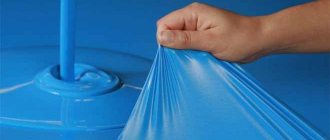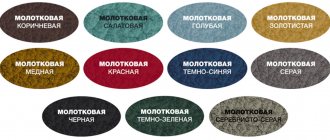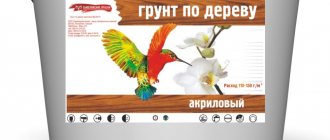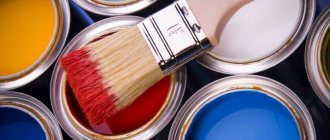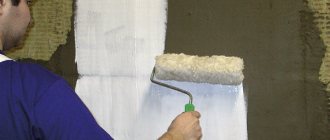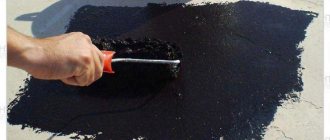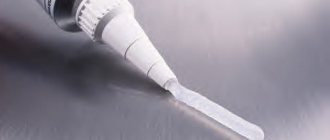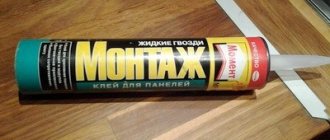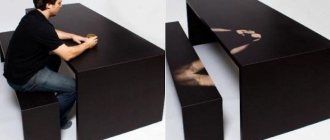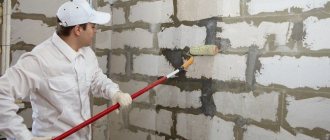In our age of trendy technology, you can observe a variety of unusual and interesting ideas, one of which is luminous paint. It can be purchased or made at home. This article will talk about how to make luminous paint.
There are two types of such paint: luminescent and fluorescent.
An example of luminescence
Luminescence is the ability of objects to glow at night. To do this, you need to apply luminescent (phosphor) paint to the material, which is based on phosphor - a phosphorescent powder pigment, an absolutely safe and non-toxic analogue of phosphorus.
Due to the content of luminescent paints in luminescent paint, which accumulate solar or artificial light, in the dark the surface covered with luminous paint begins to glow. The effect of fluorescent paint appears under the influence of ultraviolet light.
What is luminous paint, types and principle of operation
You can create a cozy atmosphere in a room and decorate the interior regardless of the time of day and lighting if you use luminous paint. Decor is often used in children's rooms so that the child is not afraid to sleep in the dark at night without the use of additional nightlights, since this is not always safe. Using this tool you can apply any drawings to walls, ceilings or furniture. It is convenient to work with the composition, just like regular paint. But at night such drawings look impressive. Glowing paint has two types:
- Luminescent. It glows on its own when the room starts to get dark; it doesn’t require any additional equipment.
- Fluorescent. It glows just as brightly, but for this you need to direct ultraviolet rays of a special device at it, without which it will look like an ordinary dye.
Luminescent paint is used more often at home, as it spontaneously creates a bright glow in the room. As soon as the sun begins to set, it becomes brighter and in complete darkness all the drawings are fully visible. The work of the product lies in the presence of special pigments in its composition - phosphors. They attract and accumulate light energy during the day, and at night they reflect it, creating a bright glow. They not only accumulate the energy of sunlight, they can be “charged” with the help of artificial lighting, or even lunar glow. Both types can be used, however fluorescent liquid can be hazardous to health due to the release of enzymes when exposed to ultraviolet light, so it is best used outside a building.
Glowing paint
Description of KM
The composition does not respond well to chemicals or physical force. It owes such strength to its pigment substances - phosphors. The surface decor will not lose its brightness for a long time (30 years).
In order for the glow to not be interrupted, the pigments need to be recharged. If rays of light fall on the treated base for at least 20 minutes, the luminescent coating will work in the dark for at least 8 hours. The more phosphors in the CM, the brighter the applied decor on the surface glows.
Often compositions with phosphorus are confused with such luminous paints. The phosphorus component is hazardous to health. Phosphorescent dye is used outdoors. Phosphors are harmless, so CMs based on them are approved for use in rooms where children live. There is no toxic odor.
Scope of application of luminous paints
Since special coloring pigments make luminous paint, they are added to the composition of other products, which makes it possible to obtain a glow not only from the applied design, but also from other objects and decor. This tool is used in many areas:
- Interior and exterior decoration - drawings applied to the wall or ceilings with dye;
- Painting interior items. Often used for painting windows, doors, picture frames and other small parts;
- Road signs - they always glow in the dark without ultraviolet radiation thanks to the phosphors they contain;
- Advertising signs and banners;
- When decorating clothes, designers often add luminous elements to clothes. It is also used to design special clothing for traffic police and road workers;
- Road markings;
- Decor (sand, stones, frames), gifts (mugs, souvenir flags) and jewelry (pendants, bracelets, beads).
Please note: Detailed instructions for reviving old furniture with your own hands
When decorating parts that directly touch the human body, only luminescent paint is used. And for advertising banners and signs, fluorescent can be used, but it is not always convenient to connect ultraviolet equipment to it. Phosphors are also often used in the cosmetics industry. They can be added to nail polishes or hair dyes to create a neon effect. Nowadays, this feature is available in almost all salons, which allows you to create an original manicure or haircut.
Painted wheels
Signboard with glowing paint
Compound
Phosphor powder
Glowing paint is a combination of phosphor pigment and clear varnish. The lanthanides and aluminum oxides contained in the paint activate the glow process. The phosphor has the ability to accumulate light energy and the property of a long illumination period. The source of charge for it can be solar or ultraviolet rays, incandescent lamps or fluorescent lamps.
Just 15 minutes of intense daylight or artificial light is enough to charge for eight hours of glow.
It is noteworthy that the process of light accumulation is a continuous cycle, and also that manufacturers provide a guarantee for the operation of luminous paints for at least 30 years. Moreover, the phosphor adapts well to temperature changes, it is frost- and heat-resistant, so it is used for both interior and exterior work.
Powder fluorescent paints
Glowing pigment powder comes mainly in light green yellow and blue shades. If you add colors, you can end up with orange, red-orange, yellow, blue, yellow-green colors. Interestingly, the brightest glow is produced by a light green pigment powder, which during the day has a pale light green hue.
Luminous grout for tiles in the kitchen or bathroom looks original in the interior. Moreover, the luminous grout has a moisture-resistant effect.
Ceiling painting with luminescent paints
Glow-in-the-dark paint can turn a room into a fairy tale. It is truly wonderful, being within the confines of the apartment, to contemplate the beauty of the night starry sky on the ceiling.
Are these paints safe for health?
Before you make luminous paint at home, you should consider its safety and scope of application. Since one of the types requires exposure to ultraviolet radiation, it is not always recommended to use products at home. Fluorescent paint contains phosphorus, which, if an increased amount enters the human respiratory tract, can cause health problems, which makes its use in poorly ventilated areas dangerous. In any case, for interior finishing it is better to limit its use. But the main component of the luminescent dye is phosphors, the main part of which is transparent varnish. Because of this, after applying the solution in the room, it is enough to ventilate it well, after which this finishing option will be absolutely safe for the human body, regardless of its age. However, keep in mind that allergic reactions to individual components of luminous paint may rarely occur, which may make its use not entirely safe.
KM classification
Coatings with phosphor are:
- colorless or translucent . This layer is formed thanks to a transparent varnish. KM interacts with any surface. Often it is used to protect a drawing. During the day it is just a protective covering, it glows at night;
- with a touch . Color appears when pigment is added to the composition. The paint layer looks like a colored coating during the day and glows at night.
The operational characteristics of CM depend on its chemical composition. Differences in performance indicators formed the division into groups:
- luminescent CMs with good tenacity - polyurethane-mineral enamels. Applied to plastic;
- with a high drying rate, environmentally friendly - water-soluble acrylic emulsions;
- resistant to overheating, withstanding 500°C - heat-resistant paints. Hot glass, ceramics, metal are processed;
- CM with high water-repellent properties. Used in bathrooms and swimming pools.
Important: the biggest disadvantage of a luminescent dye is its high price or inaccessibility to the average buyer.
Fluorescent paint
The main possible harm to fluorescent paint is the enzymes that are released from it when exposed to ultraviolet rays. However, when used spontaneously, separately from ultraviolet radiation, it is also safe for the human body. Thus, phosphorus is released in the smallest quantities possible, which does not pose a danger to the human respiratory tract. The composition is suitable for painting almost any type of surface. Just keep in mind that if you use a primer layer before applying the dye, it will stick better and look brighter and more impressive. The drawing stays on the surface for quite a long time. It can be preserved in good quality for up to five years with a minimum number of microcracks and chips.
Pay attention to: Alkyd paint for wood for exterior use: features of the composition and rules for its use
Additional effects and drawings
The high decorative characteristics of textured paints provide wide scope for creative imagination.
A number of options for additional decoration of the surface of textured paint are used:
- Trowel. If you have enough work experience, you can achieve the creation of full-fledged artistic compositions on the ceiling or walls. Most often, the brush stroke technique is used for this: instead of a brush, in this case the artist holds a trowel.
- Stencils, sponges, stamps, etc. To create a uniform surface for additional decoration, you can use pre-selected stencils or sponges. The print is applied to the still raw material, so in such cases it is better to work together: one person applies the paint with a roller or spatula, and the other then applies additional prints to the surface.
- Graters, scallops. They are used to scratch the surface (this technique is typical for creating the “Marseilles wax” texture).
- Azure. Using this material, the painted surface of the ceiling or walls is created with an additional effect. It can be shine, gloss, mother-of-pearl, etc. This will require a two-layer application of the glaze using a short-nap roller or paint brush. A pre-moistened and wrung-out natural sponge is also often used. Having dipped it in mother-of-pearl azure, decorate the base using circular movements. To increase the clarity of the resulting pattern, the sponge is pressed harder and rolled.
To protect adjacent surfaces from paint, the boundaries of the area to be finished are taped with masking tape. If you lack experience, it is not recommended to immediately take on the design of open areas of the ceiling or walls. It is better to choose for preliminary training a place on the wall that will later be covered by a cabinet. Given the thickness of the textured paint, it takes several days to completely dry.
Glowing phosphor paint
Phosphor paint is safer because it does not emit enzymes harmful to the respiratory tract. In addition, it does not require exposure to ultraviolet light, which makes it easier to use. The phosphor itself contains a transparent varnish, which makes it safe for health. The substance attracts and traps light, reflecting it at night. This allows you to create a glow in the picture. The glow lasts quite a long time. After two hours of collecting light energy, the pattern drawn by the luminescent dye reflects it throughout the day.
How to make your own phosphor
You can create luminescent paint yourself, which will spontaneously collect and reflect light in the dark. In terms of technical characteristics, it will be similar to the store-bought version; it will also retain its glow for a long time. There are several recipes with which you can make a luminous solution:
- Recipe 1. For this you will need to mix one glass of warm water and two tablespoons of hydrogen peroxide. Add two teaspoons of table vinegar and a little salt to the liquid. Mix the solution thoroughly, it is better to do this quickly - you can close the container with a tight lid and shake. The resulting luminous liquid can be used to paint decor or apply to walls. If you use double the proportions of additional components (except water), you can increase the concentration and glow.
- Recipe 2. If you have a luminous marker, you can use it. To do this, carefully unscrew it, remove the rod and dissolve its dye in a small amount of water. The resulting water can then be mixed with a regular coloring pigment for finishing. Use as little water as possible to prevent the composition from being compromised after dilution.
- Recipe 3. Take two tablespoons of water and mix them with three grams of pine needle concentrate, dissolving it until smooth. Mix a pinch of boric acid with half the resulting liquid and bring the mixture to a boil. After the solution has cooled completely, add the second half of concentrated water and boil again. The resulting solution will play the role of a phosphor, which can be mixed with regular dye and used as a luminous dye.
Pay attention to: Hammer paint for metal: types and advantages of forge paints, surface preparation and painting technology
Before making glow paint, it is recommended to protect your eyes and hands, as some components may be harmful. It is important to strictly follow safety precautions and proportions, so you will get a glowing liquid quickly enough. Regardless of the option used, the resulting phosphor must be mixed with standard interior or exterior paint. But keep in mind - you don’t need to greatly dilute the dye with the resulting liquid, as its quality can deteriorate, it will become too liquid and will look bad as decoration.
Algorithm for preparing CM at home
It’s not difficult to make luminescent paints with your own hands at home.
At the first stage, the emphasis is on purchasing the main component - phosphor - from stores specializing in the sale of building materials. The intensity of its color affects its value.
Important: 100 grams of pigment, which is the source of the glow, is used to cover 8 m2.
The second component (varnish) is selected taking into account the base being processed. The correct selection of varnish affects the adhesion of the dye to the surface and the service life of the coating.
The cooking technology is divided into steps:
- varnish is poured into glass or ceramic containers;
- 30% powdered phosphor is added to 70% of the varnish;
- 1% solvent is introduced;
- for a color composition, the desired color is added;
- the components are mixed until a homogeneous mass is formed.
The technology for applying homemade dye is the same as for store-bought dye. The quality of the varnish dictates the period and method of storing the luminous paint. Its technical characteristics, as well as the consistency of the CM, influence the choice of coating tool. Most often a brush and roller are used.
Tips for applying paint
Regardless of whether you made the luminescent paint yourself or bought it ready-made, when using it, it is recommended to consider some tips. They will make it easier to apply the solution, ensuring a positive result. There are many recommendations for applying the composition, regardless of coating:
- Protect your eyes and breathing when working with the solution. If it gets into your mouth or eyes, you should immediately rinse the affected area with plenty of water and then consult a doctor.
- Regardless of the type of composition, it should be used in a well-ventilated area with the windows always open.
- When using the finished product, before using it, mix thoroughly to combine the phosphor sediment with the main composition.
- To make the result look more impressive, it is better to apply two layers of the solution. However, after the first coat, give the solution two hours to harden.
- Prepare the surface before painting. To do this, make sure that it is completely flat and dry; you can additionally coat it on top with a white primer to make the dye adhere more easily.
By following the recommendations for applying the dye, you will get an effective result without harming your health or compromising the safety of using the premises.
Glowing paint
Communities › All about Paint and Painting › Blog › Choosing heat-resistant paint in cans
Greetings to all! I was faced with the problem of choosing heat-resistant paint; I tried 2 types of paint from the manufacturer KUDO: regular heat-resistant and special heat-resistant for calipers. I did a test paint job and did everything according to the instructions on the cans. Moreover, the usual heat-resistant one required heat treatment after painting for 20-30 minutes in an oven at a temperature of 200-300 degrees, but the heat-resistant one for calipers does not. After heat treatment, as the manufacturer stated, the paint will become gasoline and oil resistant, but no miracle happened. Both types of paint can be washed off with regular gasoline without any residue.
I do not advise anyone to use heat-resistant paint from the manufacturer KUDO. Now I am again faced with the choice of heat-resistant paint. On the website of one of the online sellers I found a selection of heat-resistant paints from different manufacturers: 1. Abro 2. Body 3. Bosny 4. Inral 5. Soft99
Share your experience of using this or that heat-resistant paint.
only CETRA! The main thing is to prepare the part well... and everything will be great!
Features of painting a metal stove
To get maximum efficiency from using high temperature paint, the painting process should be carried out according to the rules. First of all, study the instructions on the package. And then the metal stove is prepared, and only then proceed to painting.
The tool you can choose from is a brush, roller and spray gun. If the oven is small, then a brush is enough. The spray bottle cannot be used with all formulations; please refer to the manufacturer's instructions. The walls of the stove can be painted well with a brush, but it will be easier to cover the fittings evenly with an aerosol.
Application technique
When working at home, we will need any of the most popular painting tools: a brush, roller or spray gun.
Recommendation: If the area to be painted is small, then aerosol reflective paint in cans will help. In this case, painting yourself will become even easier.
Spray paints
As in any painting work, we start by cleaning the surface from dirt and dust; the metal can additionally be cleaned of rust and traces of grease; on the road surface, pay attention to large pieces of clay; everything needs to be removed to the base.
Next, there are 3 possible scenarios:
- When the base varnish is mixed with color and reflective beads pigments. This method is good for use with a paint sprayer.
- When the base is applied, the varnish is applied to the surface to be painted, and the pigment powder of the desired color is scattered on top using a sieve. Excess balls are removed with a stream of air. It is important here that half of the pigment is not painted over, i.e. the previous layer of varnish served as an adhesive base. This technique is used for road marking on a large scale.
- When the base varnish (in this case it is more logical to call it primer) is white, applied to the material and after it has completely dried, we apply a colored reflective layer.
Before using any method, it is necessary to thoroughly mix the varnish and the base composition. To increase the wear resistance of the coating, quartz sand (grain size no more than 0.2 mm) is placed in the paint in a proportion of 0.5 to 1 hundredth of the total mass.
Video clip on the topic:
It is necessary to secure a friend’s fence near the road
My friend's country house is located near the road. At night the machine tried to straighten the fence in its own way. The car dented a temporary fence made of corrugated sheets. Vadik was going to install a stone base and a forged top
He was worried that the passengers of the careless driver could then be seriously injured. It was necessary to highlight the fence line with light or special paint
Reflective paint
A friend had LED lamps hung around the perimeter. But they went out along with the road lights when the electricity went out. Far from the city this happened often. I offered him various options:
- install autonomous power supply for fence lighting;
- install reflective elements made of plastic;
- stick a luminous film;
- apply special paint.
The first two options are costly financially and physically. The film can only be pasted on a smooth surface. Glowing paint remains. Vadik wanted to know:
- what it is like;
- can it be applied to fabrics?
- how to cook with your own hands.
